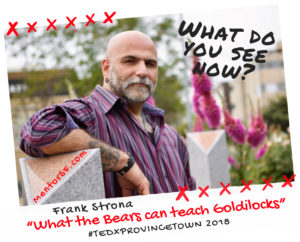Have you blogged that?
“Have you blogged that?”
“Have you seen our blog?”
As a public health force we have taken huge leaps towards a new vision of 21stcentury public health that includes as part of its landscape, technology and new media tools. A world where words such as blogs, micro-blogs, twitter and tweets rule the internet,side by side with our more traditional electronic clearinghouses and steadfast websites.Yet, be it President Obama’s, record breaking“four more years” tweet or the HealthyPeople 2020’s push to reframe health communication and health literacy, we have entered a new frontier that is a vibrant and interactive opportunity to harness digital technology to facilitate the sharing of content that is fast, functional and timely. But to assume everyone is on the same page with this new digital landscape, actually
ignores and perpetuates some rather large gaps of knowledge and understanding. My theme for this blog is a quick and simple overview of blog “ netiquette” and some simple sure-fire ways that can help you navigate this new landscape.

Borrowed from http://hedgercorp.com/2010/12/05/productivity-retreat/ (Thanks!)
Today’s Virtual Water Cooler
Today, blogs function much like the “water cooler” of the past. They can serve as a digital meeting place to share information with colleagues, both in the office and at a remote location, and do so in a more in-depth way that cannot always be attained through email. The content is timely and fresh and offers the readership an opportunity to dialogue in an online, real-time environment. There are many things to do to get more involved and stay tuned in to the latest blogs and information
Here is my quick-fire blog guide…
1) Learn hot to use the “Bookmark” function on your computer and bookmark the blogs you want to follow .
2) Offer to be a guest poster or share an original post.
3)Set reminders or make it part of your weekly routine to check your favorite blogs.
a. Spend no more that 15 – 30 minutes reading any one
blog. This shouldn’t feel like homework – it should be a “want to” not a “have to.”
4) Share your thoughts, especially if you read a particularly interesting post or one that you feel connects with your thoughts pro or con .
5) Follow certain response guidelines –
a. Stay away from that all too common “I agree” statement. Readers want to know why you agree (or disagree, find concerning, etc.) and
more importantly what supporting information (or experience) you have that makes your comment pertinent.
b. It’s fine to disagree with a post – but remember that what is posted is not as easy to remove. Lack of human interface means your words are judged alone. Humor and sarcasm doesn’t always translate well on blog content.
c. Be respectful and demonstrate your knowledge, opinion or even your more confused inquiry in a fashion that allows the blogger and to hers who post comments (and otherreaders) to engage in a discussion. Rather than turn it into a “flame thread” that ends up more like bashing. Even if you are correct – it’s been my experience the more clear and citable examples you can use – the less personal yo ur comments seems.
6) Share what you are reading. If you are finding it interesting – I bet someone else will too.
Want to know more about blogging or social media? Visit some of the links listed here:
- Rules of Netiqutte Blog: http://rulesofnetiquette.com/blog/
- For more information on Social Media at the CDC, check out it’s well done page: http://www.cdc.gov/socialmedia/index.html
- CDC also has many active blogs both accessible via the internet as well as those accessible via the intranet. Visit http://blogs.cdc.gov/
- For a look at the blogs. If you are a Twitter user (or a new convert) check out CDC.gov http://www/twitter.com/cdcgov
- For a more detailed list of CDC twitter accounts visit: http://www.cdc.gov/socialmedia/tools/twitter.html.
Originally Published on the CDC Workforce Matters Blog Feb 2013
FV Strona
About Frank Strona
As a nationally known writer, educator, advisor, technology, coach, strategic engagement and content specialist, I have been active in the pursuit to improve, educate and promote opportunities that support the engaged learner and business while also preparing the workforce with the tools and skills necessary to stay competitive in a rapidly expanding technology-based world.
November 26, 2014 @ 9:42 pm



